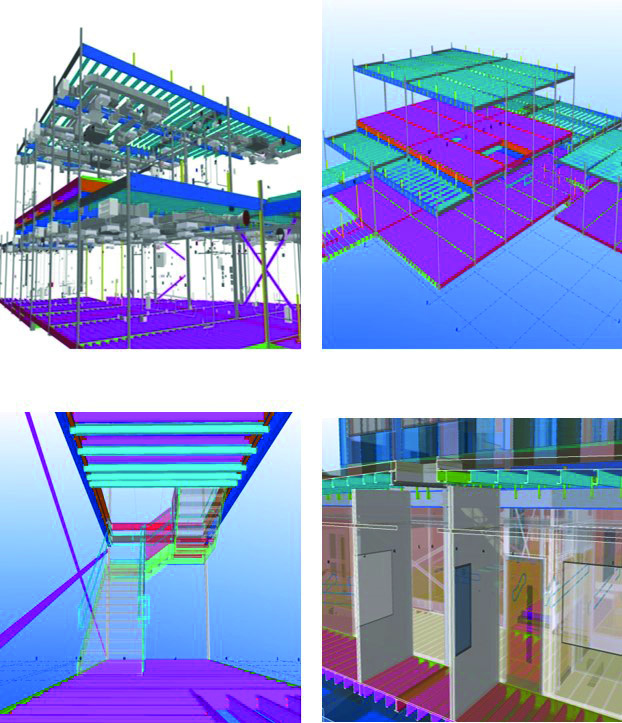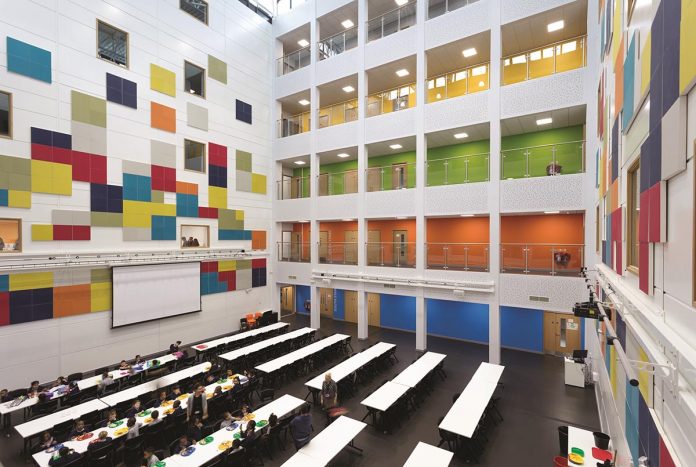At the forefront of offsite approaches, volumetric modular methods have a remarkable impact on reducing costs while increasing quality and safety measures in the construction arena. Richard Hipkiss, development director of the MPBA, looks at the digital advances that are changing the way volumetric manufactured buildings are designed and developed
Volumetric modular technology is arguably a method of construction that is experiencing an entirely different growth trend to that of panelised approaches. The surge in demand has gone hand-in-hand with an increase in investment, which in turn drives innovation. At the core of module manufacture, Design for Manufacture and Assembly (DfMA) protocols and Building Information Modelling (BIM) technology empower optimal configuration of offsite approaches by digitally connecting multidiscipline teams from the beginning of the concept design right through to the development process and beyond.
DfMA means buildings are conceived for offsite manufacture and assembly onsite. BIM facilitates early design detail and three-dimensional design information, minimising the risk of errors by eliminating the time-consuming process of translating engineers’ information into cutting lists and assembly drawings. BIM also facilitates the optimising and testing of designs in virtual and pre-production environments.
A key factor in the exponential growth within our sector has been the government advocating more adoption of volumetric technology. Since the publication of Mark Farmer’s report, Modernise or Die, back in 2016 Westminster has been more outwardly supportive now robust supporting evidence is available to underpin their involvement and investment. By far the greatest benefit to the industry is having a guaranteed project pipeline. This gives manufacturers the confidence to invest in research and development to advance volumetric technology, as well as finance larger factory facilities, machinery, robotics and digital technology to constantly advance the industry.
Sophisticated and technical developments
Technology is ever-evolving and the offsite industry is now integrating BIM and digital design specifications with Enterprise Resource Planning (ERP) and Material Requirement Planning (MRP) to improve accuracy, productivity and material usage.
This technology permits manufacturing simulation and visualisation, clash detection and virtual onsite assembly modelling/programming, which can be enhanced using augmented and virtual reality.
The demand for customisation has also led the industry to develop methods for adaptation during the mass production process to meet individual requirements. These modules can be delivered to site pre-fitted with electrics, plumbing, heating, doors, windows and even bathrooms and kitchens, thereby reducing the onsite building programme and accelerating the overall construction process.
In her report Building a Safer Future, Dame Judith Hackitt highlights the need for a systems-based approach with a golden thread of information running through the lifecycle of each project from concept to completion. Central to the concept is guaranteeing the traceability and availability of project data and all decisions relating to the design, construction, safety performance and maintenance of the building – which not only enhances building safety but alleviates contractual disputes.
With volumetric manufactured buildings, all construction data can be validated and coordinated as part of a structured process, which helps provide accurate and reliable information for clients at the point of handover.
Volumetric construction helps ensure client satisfaction and product assurances through the certainty and quality embedded into the manufacturing process.
The MPBA was founded in 1938 and its role has changed hugely over the years to be the organisation it is today. We now have a clear remit and objective, which is to represent the interests of members and the sector. Working with industry leaders who are also members makes this an association for the industry, run by the industry.
The MPBA collaborates with specialist technical advisers to enhance innovation in the design and manufacture of volumetric modular buildings. We have also secured a seat at the top table and now influence the national construction agenda at a governmental level and promote the benefits of volumetric modular technology nationwide.
Looking to the future, as with many sectors, to continue to grow and evolve the volumetric industry needs new innovative people to join the industry. With the specialist nature of what we do, “off the shelf” training does not fit the bill – so we have developed training to meet our industry’s needs.

Education and training
As the construction industry starts to emerge from this pandemic, it is important we lay the foundations for a more rapid and sustainable building programmes, where the focus is on quality and delivering buildings that are fit for the future. To assist, the MPBA has launched a new Training Centre and education programmes where young and mature students can learn key skills relevant to our industry.
The facility, which is located in Coventry, West Midlands, offers a comfortable environment for knowledge share away from the pressures of the workplace. The Training Centre provides the MPBA with the ability to deliver a consistent high level of informative technical and best practice programmes for members.
Richard Hipkiss
Development Director
Modular and Portable Building Association (MPBA)
Tel: 0044 (0) 2475 90 1938
*Please note: this is a commercial profile














